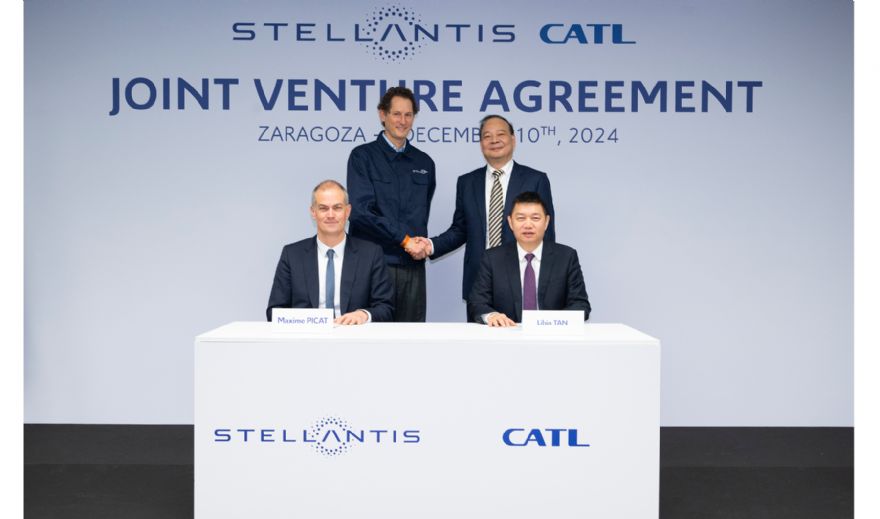 Stellantis
Stellantis and
CATL reached an agreement earlier this month to invest up to 4.1 billion euros to form a 50-50 joint venture (JV) that will build a large-scale European lithium iron phosphate (LFP) battery plant in Zaragoza, Spain. Designed to be completely carbon neutral, the battery plant will be implemented in several phases and investment plans.
Targeted to start production by the end of 2026 at Stellantis’ Zaragoza site, the facility could reach up to 50GWh capacity, subject to the evolution of the electrical market in Europe and continued support from authorities in Spain and the European Union (EU). The JV will boost Stellantis’ best-in-class LFP offer in Europe enabling the automotive manufacturer to offer more high-quality, durable and affordable battery-electric passenger cars, crossovers and SUVs in the B and C segments with intermediate ranges.
In November 2023, Stellantis and CATL signed a non-binding Memorandum of Understanding (MoU) for the local supply of LFP battery cells and modules for electric vehicle (EV) production in Europe and established a long-term collaboration on two strategic fronts: creating a bold technology roadmap to support Stellantis’ advanced battery electric vehicles (BEVs) and identifying opportunities to further strengthen the battery value chain.
Stellantis chairman John Elkann said: “Stellantis is committed to a decarbonised future, embracing all available advanced battery technologies to bring competitive EV products to our customers. This important joint venture with our partner CATL will bring innovative battery production to a manufacturing site that is already a leader in clean and renewable energy, helping drive a 360deg sustainable approach. I want to thank all stakeholders involved in making today’s announcement a reality, including the Spanish authorities for their continued support.”
Operational knowhowRobin Zeng, chairman and CEO of CATL, said: “The joint venture has taken our cooperation with Stellantis to new heights, and I believe our cutting-edge battery technology and outstanding operational knowhow combined with Stellantis’ decades-long experience in running business locally in Zaragoza, will ensure a major success story in the industry. CATL’s goal is to make zero-carbon technology accessible around the world, and we look forward to cooperating with our partners globally through more innovative cooperation models.”
CATL is bringing ‘state of the art’ battery manufacturing technology to Europe through its two plants in Germany and Hungary, which are already operational. The Spanish facility will enhance its capabilities to support customers’ climate goals, further underscoring its commitment to advancing e-mobility and energy transition efforts in Europe and the global market.
Stellantis is employing a dual-chemistry approach – lithium-ion nickel manganese cobalt (NMC) and lithium iron phosphate (LFP) – to serve all customers and exploring innovative battery cell and pack technologies. The company is on track to becoming a carbon ‘net zero’ corporation by 2038, all scopes included, with single-digit percentage compensation of remaining emissions. The transaction is expected to close in the course of 2025 and is subject to customary regulatory conditions.